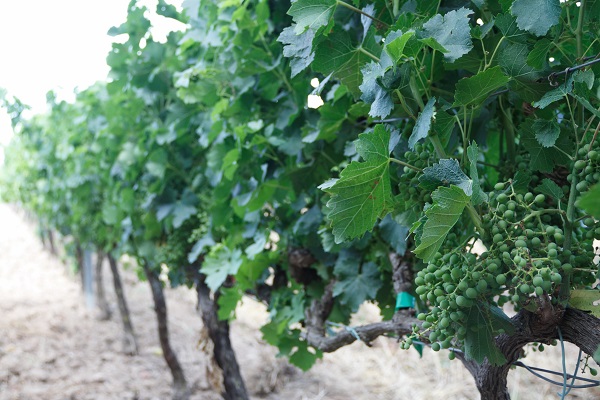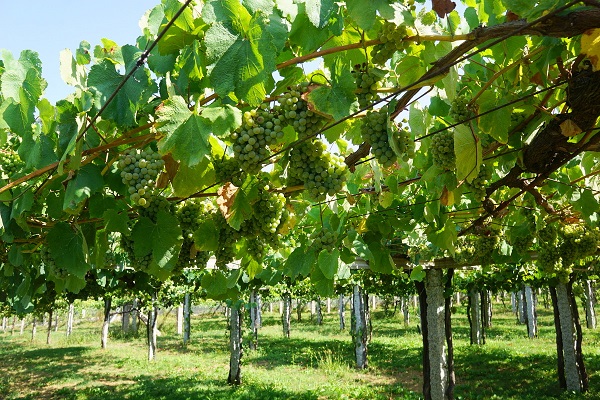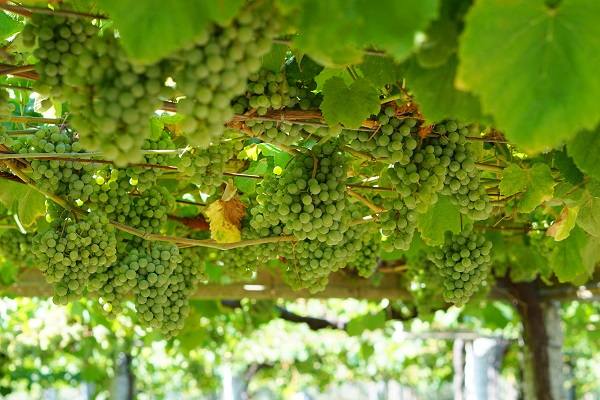Have you ever been to a winery during harvest season?
It’s an intense, magical time where the carefully-laid plans of the entire year hinge around a crucial few weeks, and the atmosphere is charged with expectation. After a long winter of pruning, plowing and fertilizing, followed by the potentially devastating storms and frosts of spring and then the brutally hot summers, it all comes down to this. If everything goes well, a frantic few weeks in the vineyards will yield a healthy crop of ripe, balanced grapes. When wine experts refer to the ‘vintage’ of the wine, this is it, in its essence. How ripe were the grapes when they were picked? Were the levels of sugar and acidity in balance, or did they over/under ripen? Were there any issues with rot, disease and fungus in the vineyards?

In certain parts of the wine world, the amounts of wine produced every year can vary significantly because of this. In 2017, northern Spain was ravaged by frosts and some of its best producers lost up to 80% of their harvest for the entire year. Imagine that for a moment: earning 20% of your expected annual salary because of weather conditions. This is how important harvest is to a winemaker, and the potential quality of their finished wine is written in the stars during these days. The saying goes that you can make poor wine with good grapes, but you don’t stand a chance of making great wine with bad grapes!
I worked my first harvest in 2015 in Spain’s smallest wine region, DO Alella. I had recently completed my WSET Level 3 course in London, and wanted to join up all the dots with some practical experience, so I set off up into the hills that lazily roll down the Mediterranean coast, to learn how it all really works. I was headed for Raventos d’Alella, a winery tucked away behind the town itself, with the only evidence of the Mediterranean a salty breeze that regularly washed over the region, keeping us and the grapes nicely chilled, despite the baking sun above us. I’d like to say that I was a natural, that my book studies prepared me for understanding the day to day tasks of vineyard work, but I’d be lying. Working in a winery is hard, with long periods of repetitive, difficult, often boring work punctuated by moments of frantic activity and excitement.

I arrived just before 7 a.m. every morning and by the time the sun was starting to announce itself to the world, we’d have already been working for over an hour. The jobs changed every day, depending on what needed to be done. When harvest set in fully, at the beginning of September, most of our days were spent hurriedly picking grapes, carefully and by hand, to ensure that they didn’t break and compromise the purity and quality of the juice. They’d then be gently transported to the winery and were loaded onto a sorting table, where we could pick out twigs, leaves, insects and poor-quality bunches that hadn’t been noticed and discarded in the vineyard. These grapes would then be pressed, with the high-quality juice siphoned away to a fermentation tank, ready to begin the magical transformation into wine, under the watchful eye of the head winemaker. Those of us not trained in these arcane arts had to be content with preparing for the next round, removing the mangled grape skins from the press and shoveling them into a skip which was removed daily to be distilled into ethanol, then washing and cleaning every piece of equipment until it was spotless. We would repeat this lengthy, arduous process four to six times a day, often finishing close to 8 p.m. in the evening.

When everything was going well, when the grapes were arriving from other picking teams in good order and the press was working smoothly, there was a real cheer to proceedings. The winemaker was happy, and would often give us something really delicious to drink with our sandwiches over lunch, which I spent sitting on an old tractor tire, looking out over the vineyards, the sudden silence a welcome respite from the hustle of the morning. There were moments I’ll never forget, like manually pressing an experimental micro-batch of Pinot Noir in a 100-year-old basket press, shadowing the winemaker in the laboratory and improving my rudimentary Catalan whilst I joked with my colleagues at the sorting table. The three months passed quickly and before I knew it, I was wishing my new friends goodbye and good luck, as I made my way down the hill for the final time to catch the train home, the sun slowly setting, its work also finished for another day.

When I drink a bottle of wine from Raventos d’Alella, my mind takes me back to those hot, sweaty months in the sun-kissed fields of Alella and I smile as I remember the people I worked with, and of those quiet lunchtimes with a glass of Xarel.lo and a sandwich, reflecting on it all. I now work as a wine educator and I’m very lucky to have the opportunity to pass on the joys of understanding and enjoying wine to others, but the real work is done by the people in the vineyards, in the winery, with their hands stained by toil, earth and hard work. This one’s for them. ¡Salud!
